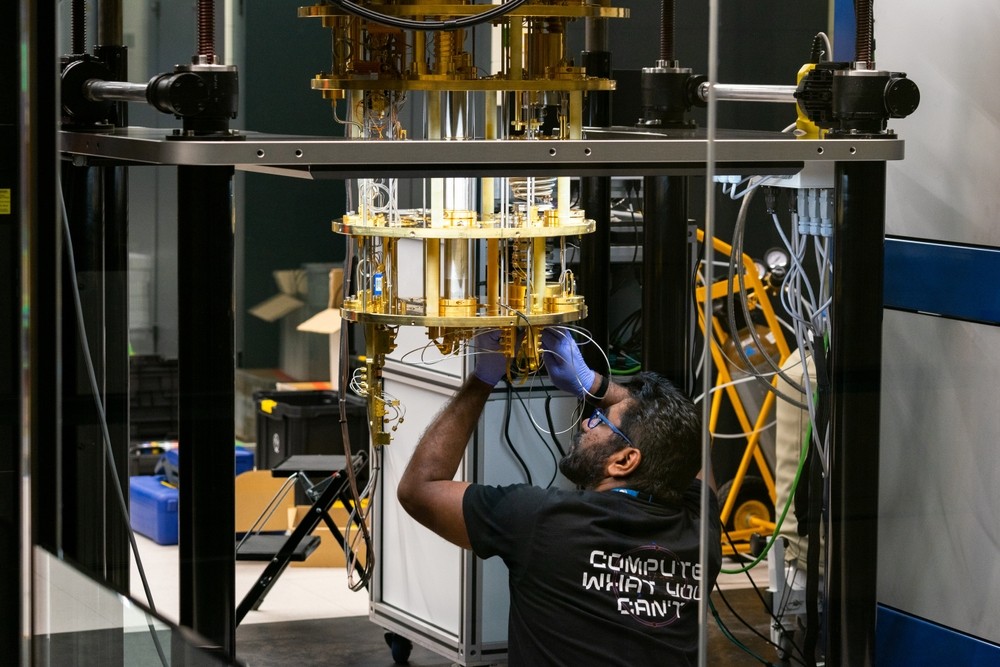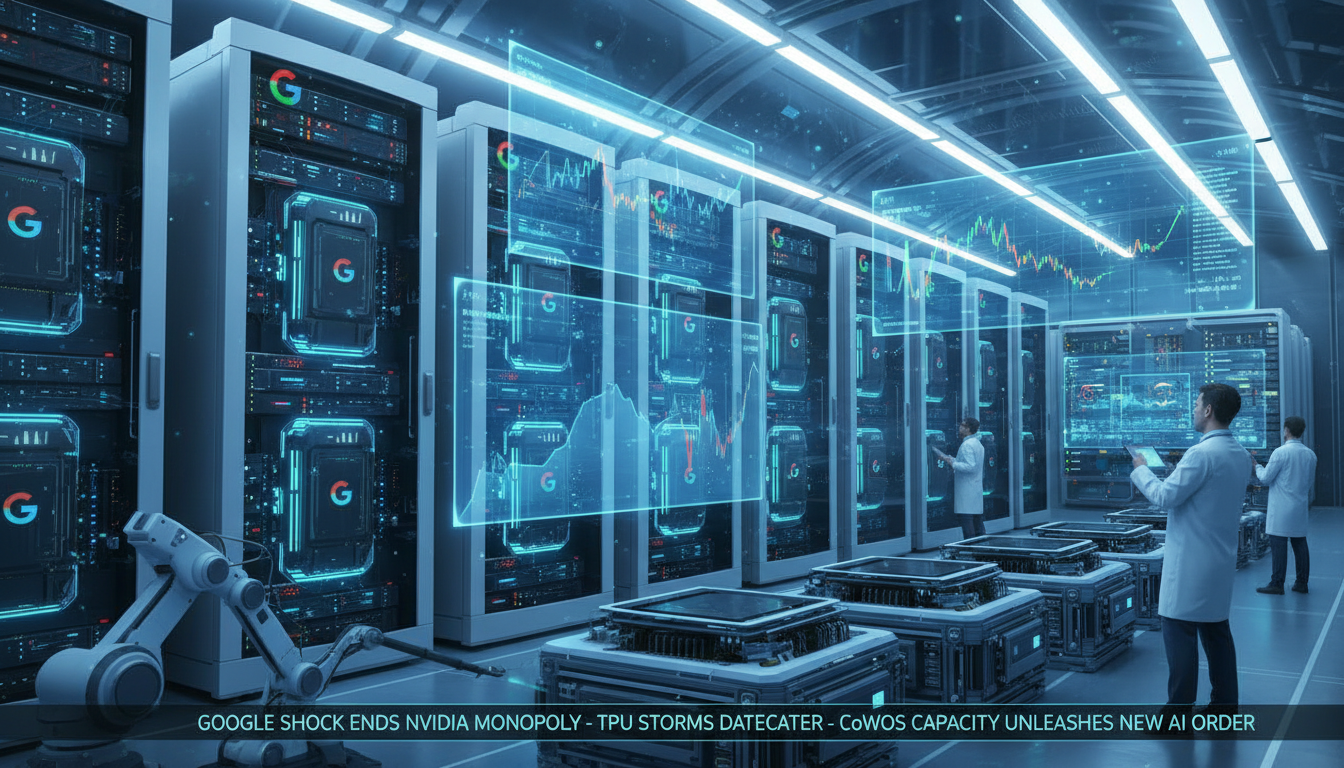*Source: https://www.aitimes.com/news/articleView.html?idxno=203888

● Quantum Alliance, Supercomputing Breakthrough, Industry Disruption
HPE·Nobel Prize Laureates·Semiconductor Companies Alliance: 7 Key Points to Transform Lab-Scale Quantum Computing into ‘Mass-Produced Quantum Supercomputers’ — Participants, Technical Challenges, Industrial Impact, AI Linkage Strategy
The following content is included:
- Who participated: HPE, Professor John M. Martinis (Nobel Physics Prize), Applied Materials, Synopsys, 1QBit, Quantum Machines, Riverlane, University of Wisconsin, and a list of key players and their roles.
- What is the goal: To transition handcrafted lab-level quantum chips to a semiconductor-style mass production system to create practical quantum supercomputers.
- Core technology and bottlenecks: Issues of qubit expansion, error correction, cryogenic integration, chip design automation (EDA), and equipment standardization.
- Industrial and economic impact: Changes in the semiconductor supply chain, the emergence of a new manufacturing market, integration of AI and supercomputing ecosystems signaling investment.
- Policy and risk: Standardization, export control, workforce demand, and cybersecurity issues.
- Core insights overlooked by other media: “Transferring the standards, equipment, and EDA of the semiconductor industry to quantum is the ‘gateway to industrialization’, which may open a predictable commercial timeline (5-10 years) and cost structure” — including specific investment and supply chain implications.
News Summary (Key Facts)
Hewlett Packard Enterprise (HPE) officially announced on the 10th that it had formed the ‘Quantum Scaling Alliance’ with this year’s Nobel Physics Prize winner, Professor John M. Martinis, and major semiconductor and quantum startups.The goal of this alliance is to convert quantum computing systems, which have been handcrafted in labs, into a semiconductor industry-scale mass production system to develop practical quantum supercomputers.Participating companies and institutions include Applied Materials, Synopsys, 1QBit, Quantum Machines, Riverlane, and the University of Wisconsin.Masoud Moseni, Head of Quantum Technology at HPE, emphasized the need for clear industry standards for the integration of quantum systems and existing supercomputers to expand qubits to hundreds or thousands.Professor Martinis has established the startup Qolab in recent years to commercialize quantum hardware and plans to accelerate commercialization scenarios through this alliance.
Roles and Implications by Participants
- HPE: Leading system integration, supercomputer-level engineering, and cloud infrastructure provision.
- John M. Martinis (Martinis·Qolab): Provides hardware roadmap and researcher network, forms a commercialization strategy based on ‘quantum supremacy’ experience.
- Applied Materials: Provides semiconductor manufacturing equipment and process know-how, and potential standardization of quantum chip production lines.
- Synopsys: Ensures productivity and reproducibility in quantum chip design with EDA solutions.
- Quantum startups (1QBit, Quantum Machines, Riverlane, etc.): Provide algorithms, control, and operating system (stack) technology and build pilot systems.
- Academia (University of Wisconsin, etc.): Conduct foundational research and validation, train personnel, and develop standard verification experiments.
Technical Focus (Detailed Items)
- Qubit Scalability: Challenges of increased interference and errors when expanding qubits from dozens to hundreds to thousands.
- Quantum Error Correction: The focus is on reducing error rates to practical levels and addressing overhead (additional qubits).
- Manufacturing and Yield: To transition to semiconductor-style mass production, securing process yield, defect rate, and reproducibility is essential.
- Design Automation (EDA): Quantum chip design specifications and toolchain are needed. Synopsys’s participation is a key driver in the commercialization scenario.
- Equipment and Process Standardization: Standard specifications for cryogenic (cryonic) interfaces, packaging, and testing equipment are needed.
- Hardware-Software Integration: Realization of hybrid computing with classical computers through optimization of controllers, firmware, stacks, and compilers.
- Interface/Integration (MPI-like standard): The need for industry standards (networking, data formats, etc.) connecting quantum nodes with existing supercomputers.
Industrial and Economic Impact
- Expansion of the Semiconductor Equipment and Material Market: If equipment companies like Applied Materials enter the quantum chip process, demand for new high-value equipment will arise.
- EDA and IP Market Changes: Tool providers like Synopsys can create revenue models through quantum-specific design and verification tools.
- Supply Chain Restructuring: The introduction of new standards in foundry, equipment, materials, and testing sectors may pressure global supply chain reorganization.
- Investment and M&A Signal: Cooperation between large IT/server companies and semiconductor equipment companies can accelerate venture and corporate M&A as a ‘price signal’ of quantum industrialization.
- AI and Supercomputer Linkage: Quantum supercomputers can create new industry solutions in chemistry, pharmaceuticals, new materials, and complex optimization problems in combination with existing supercomputers and AI.
- Economic Scenario (Predictions): Considering technical challenges, initial commercial mass production is possible within 5-10 years (pilot → early mass production → scale expansion stages).
Connection Points with AI — Why the AI Industry Should Pay Attention
- Unique Strengths: Quantum computing has the potential to break through classical limits in complex optimization, sampling, and quantum chemical simulations.
- Hybrid Model: A realistic path combines quantum accelerators (specific subroutines) with classical AI (large-scale learning and data processing).
- Infrastructure Aspect: AI supercomputers and data centers might incorporate quantum modules — HPE’s strategy considers this integration.
- Immediate Business Opportunities: In pharmaceuticals and new materials R&D, time and cost reductions can accelerate drug candidate discovery and material design.
Policy, Security, and Risk
- Standardization and Verification: International standardization (IEEE, ISO, etc.) leadership competition is necessary.
- Export Control and Security: Quantum technology crosses sensitive areas such as military and encryption decryption, potentially raising regulatory issues.
- Workforce: Explosive demand for quantum engineering and quantum software engineers requires the establishment of education and training systems.
- Security: Post-quantum encryption and security of the quantum system itself must be ensured.
- Technical Failure Risk: If error correction and scaling limitations delay commercialization, there is an investment risk.
The Most Important Insights Not Covered Well by Other News and YouTube
- Key Insight 1 — The ‘Gateway to Industrialization’ is not technology but a transformation of the manufacturing ecosystem.Transitioning to semiconductor-style mass production is not merely a matter of creating more qubits.Equipment standardization, quantum-friendly EDA tools, foundry-level process management, and test and verification systems must be simultaneously established to secure substantial cost reduction and reproducibility.In other words, even with many technical achievements (papers and demonstrations), ‘commercialization’ is delayed without a prepared manufacturing ecosystem.
- Key Insight 2 — ‘Who Controls Equipment and Tools’ Determines Market Dominance.If semiconductor equipment and EDA tool companies preoccupy the quantum field standards, they will later exert influence on the foundry, chip design, and supply chain. The composition of this alliance is a strategic positioning considering that scenario.
- Key Insight 3 — Timeline and Investment Strategy.Short term (1–3 years): Completion of standards, pilot processes, hybrid software stack.Medium term (3–7 years): Initial mass production (a few foundries), commercialization of industry-specific (pharmaceuticals, energy, etc.) quantum accelerators.Long term (7–10 years+): Establishment of general-purpose quantum supercomputers and mass production systems.Investors should focus on ‘equipment, EDA, foundry cooperation’ and ‘quantum-classic integration stack.’
Practical Recommendations (By Enterprises, Investors, Policymakers)
- Enterprises (IT, AI companies): Prepare pilot projects to test quantum accelerators, not only own quantum hardware directly but also cooperate with system integrators like HPE.
- Investors: Consider long-term capital allocation to companies in equipment, EDA, and foundry sectors (e.g., equipment companies, EDA software companies).
- Policymakers: Support standardization, workforce training programs, and establish strategic industry subsidies and regulatory frameworks.
- Research Institutions and Universities: Participate in manufacturing process and testing criteria development through strengthened industry-academic cooperation.
[Related Articles…]
- Laying the Foundation for Quantum Computing Commercialization: Summary of Industrialization Challenges and Investment Opportunities
- Integration of AI Supercomputers and Quantum Accelerators: Analysis of Future Strategies for Data Centers



